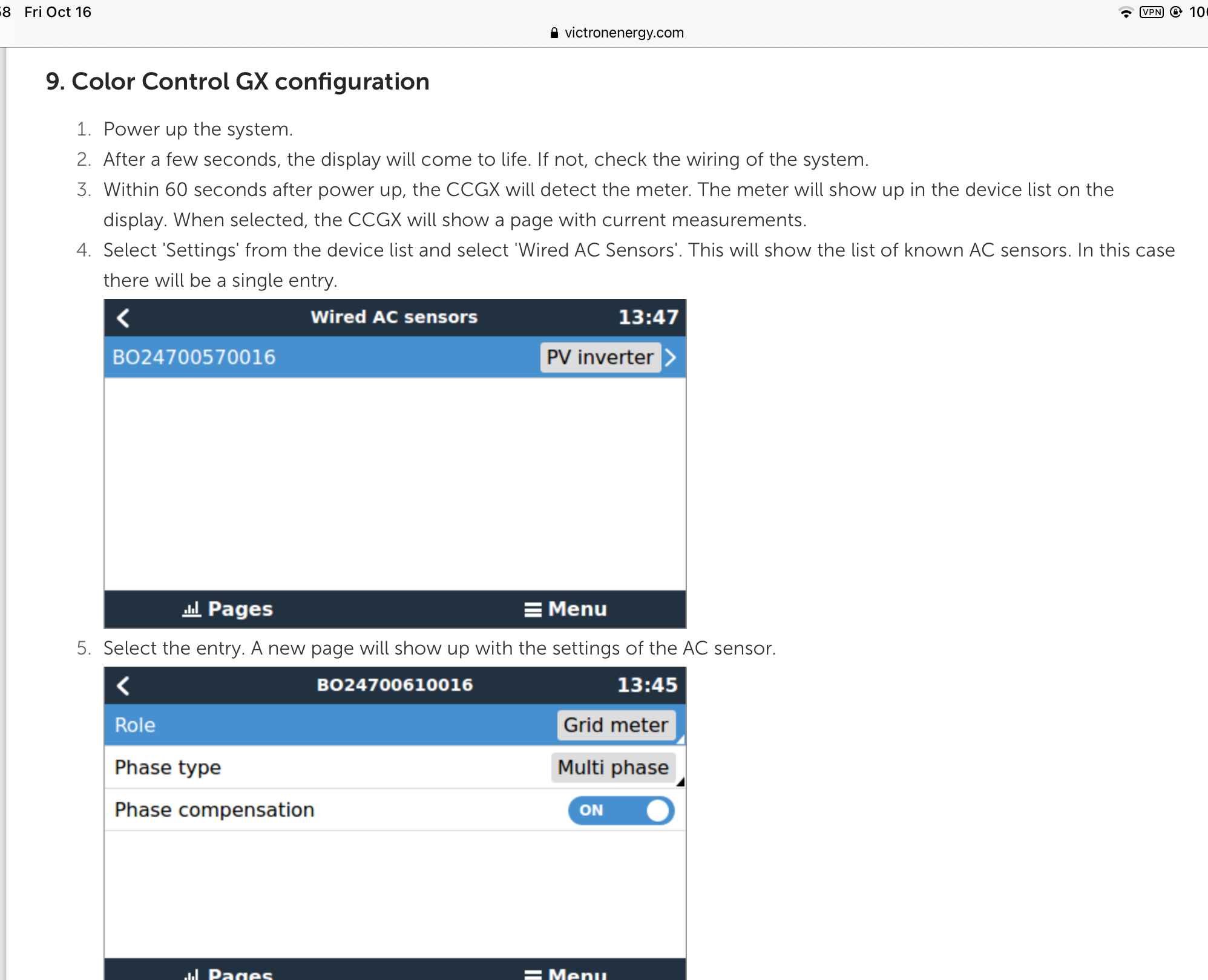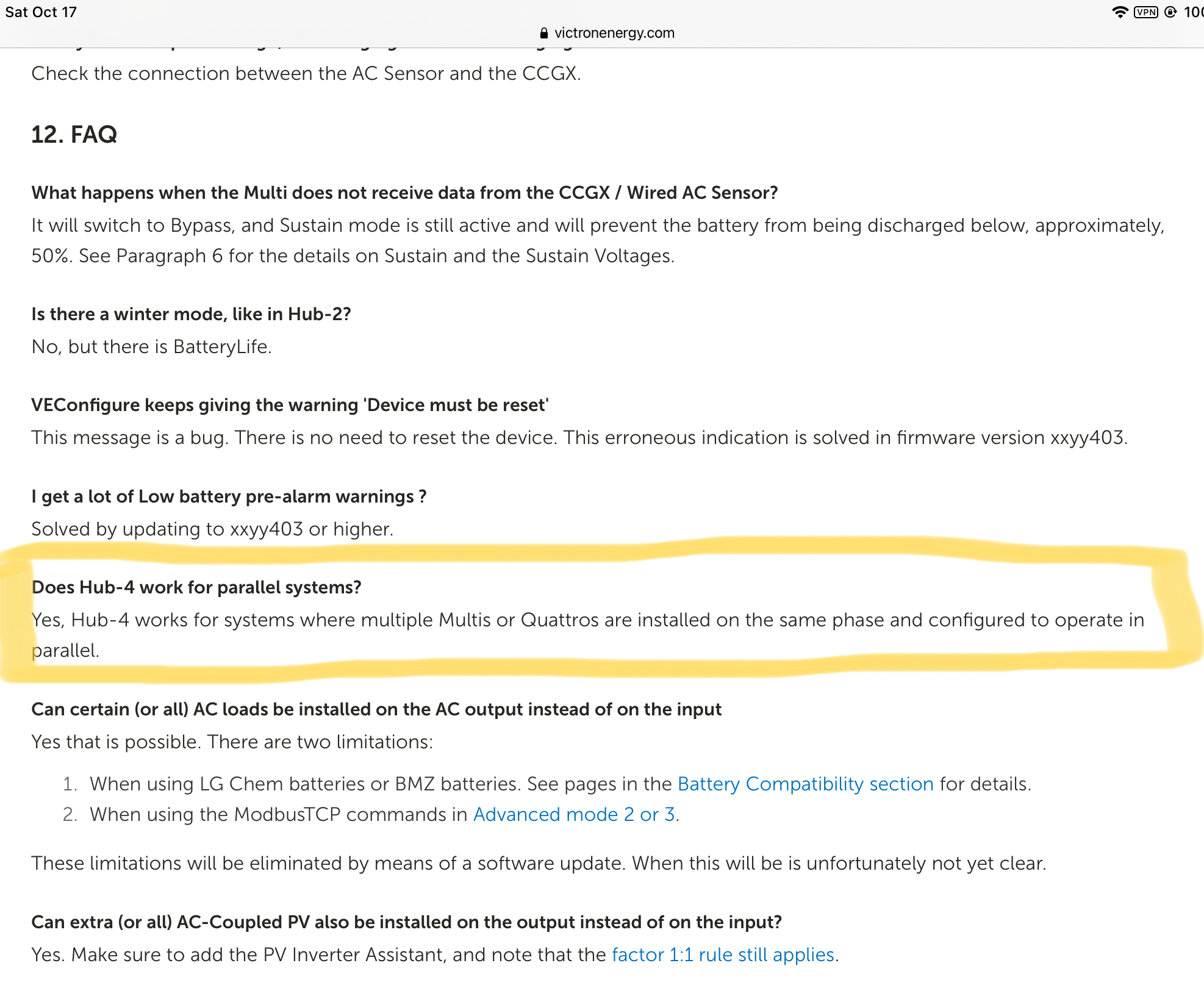I tried finding a suitable solution for this problem; however, I was unable to find one.
The problem presents itself when:
1- you have a 3-phase, 50Hz, electrical SolarEdge installation with a SE inverter and optimizers.
2- you want to add a 48-V battery storage only to one phase.
3- you want the existing PV array to feed the battery in case of grid failure.
4- you do NOT want to add additional solar panels or generators.
5- the capacity of the existing SE inverter is larger than Victron’s inverters.
It is too difficult or too expensive or both to solve this problem with Victron products.
I found a SE note suggesting solutions for this problem using a second inverter ONLY from SE to do DC coupling or AC coupling, or to replace the existing SE inverter with a newer inverter from SE compatible with optimizers and able to store energy in a 48-V battery.
However, these solutions, sadly, will work only with LG or SE battery systems. This limits tremendously the types of battery chemistries and options of battery manufacturers compatible with the newer SE inverter.



